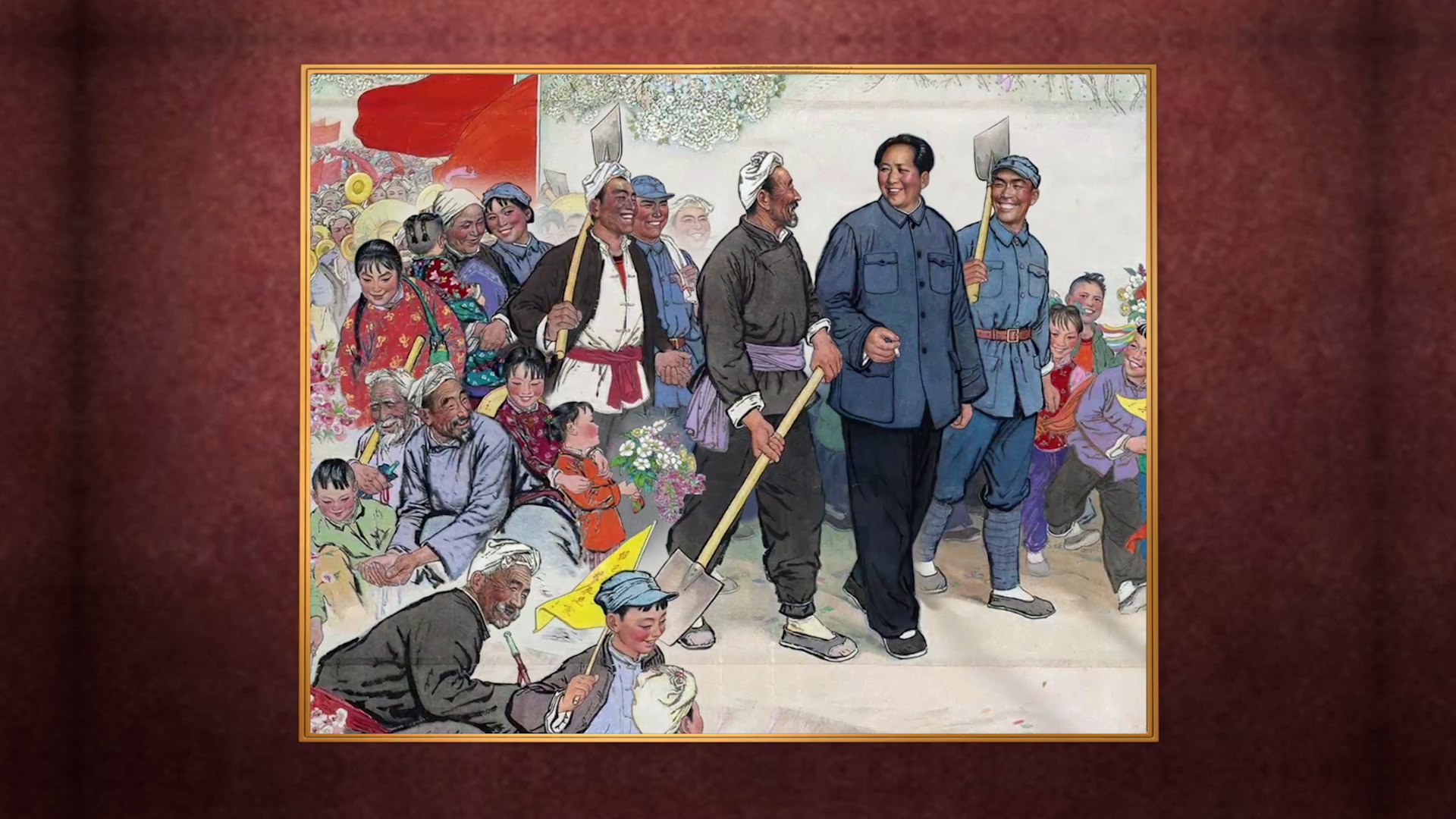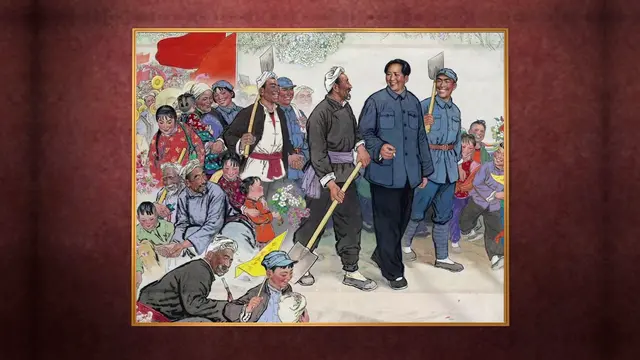02:06

In 1940, Chinese soldiers led by the CPC made joint efforts with villagers to construct a six-kilometer-long canal near the town of Yan’an in northwest China’s Shaanxi Province.
The opening of the canal had greatly improved the life of villagers. So local residents named it the "Happy Canal."
A group of Chinese artists led by Liu Wenxi created a Chinese traditional painting about it in 1974.
The painting depicts Chairman Mao Zedong walking along the Happy Canal while villagers and soldiers cheered for the opening of the canal.
During China’s War of Resistance Against Japanese Aggression (1937-1945), Yan’an was the headquarter of the Chinese communist forces.
People living in the area had been threatened by severe water shortages for generations. Crops were usually destroyed by torrential rains in the summer, which also led to food shortages.
In 1938, Japanese troops started to use their military forces to attack base areas controlled by the CPC.
The military attacks along with a tight economic blockade made the life of villagers even more difficult.
In 1939, CPC leader Mao Zedong called for the construction of a canal to help with flood discharge and farmland irrigation to ensure food production.
With a limited budget, local government officials and army soldiers took the lead and volunteered to work at the construction site. With the help of villagers, the project was completed in six months.
The opening of the canal improved agriculture irrigation of 93 hectares of farmland in five nearby villages and provided sufficient water for farming.
Since then, villagers have seen crops harvest year after year.
The construction of the “Happy Canal” reflects the self-reliance spirit carried on by the CPC and its people.
Check out
The China Report
, our new weekly newsletter.Subscribe here!
 简体中文
简体中文

